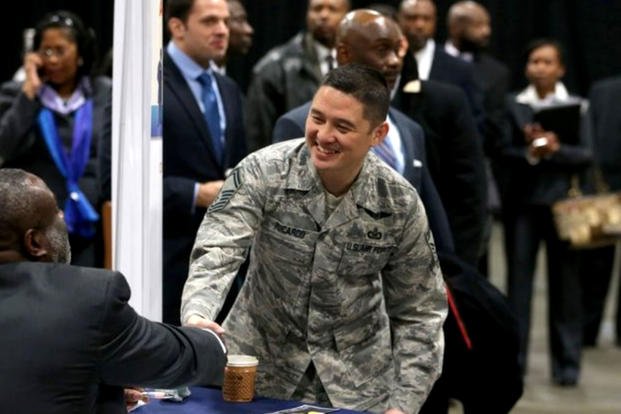The face-to-face method of hooking up well-prepared veterans directly with business managers looking to hire has been producing results on the jobs market, according to the Wounded Warrior Project (WWP).
Over the last five years, the unemployment rate for more than 150,000 veterans registered with WWP has dropped from 20 percent to 12 percent, WWP staff said.
In addition, the total salaries last year of veterans who participated in WWP's Warriors To Work program reached $103 million, the first time the number has topped $100 million, according to the 2018 WWP's Annual Warrior Survey.
In a phone interview Friday, Tom Kastner, the WWP's financial wellness vice president, said the goal this year was to make 2,450 job placements, and they've already placed 697.
Kastner, a retired Army colonel, said the WWP's approach was to begin with the fundamentals by spending time with the job seeker to map out goals and skill sets, and then to progress to building resumes and working on preparation for job interviews.
Separately, WWP is also working to establish relationships with local and national companies to develop more opportunities for warriors to make direct contact with managers looking to hire, rather than going through the usual human resources contacts.
"We all know that resumes can fall through the cracks," Kastner said, and "you can miss a lot of talent" as an employer by relying solely on the resume.
"We seek relationships that are mutually beneficial to warriors and employers," Kastner said. "We work to place warriors in meaningful, sustainable jobs that provide paths for long-term growth while offering return on investment for the hiring company."
He said about 22 percent of those who have gained jobs through the Warrior To Work program have gone the direct contact route, and "my goal this year is to move that dial."
"With direct hire programs, warriors have an increased likelihood of gaining meaningful employment and remaining in those roles," Kastner said. "This year, we want to increase the number of direct hire experiences and raise the retention rate."
He said the usual process in employment counseling was to prepare applicants, give them a list of potential employers, and then send them out to find jobs.
"I don't know that that's a bad approach," Kastner said, but direct contacts offer another avenue.
"We want to make sure that functional managers are part of this," Kastner said, and "to their credit, the companies have been very cooperative" thus far in arranging face-to-face contacts.
-- Richard Sisk can be reached at richard.sisk@military.com.
Check out the latest pay-related news on our Military Pay app. Get it now on Google Play or iTunes.













